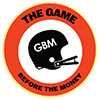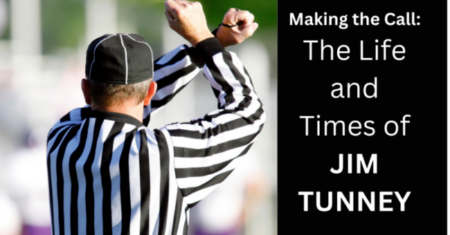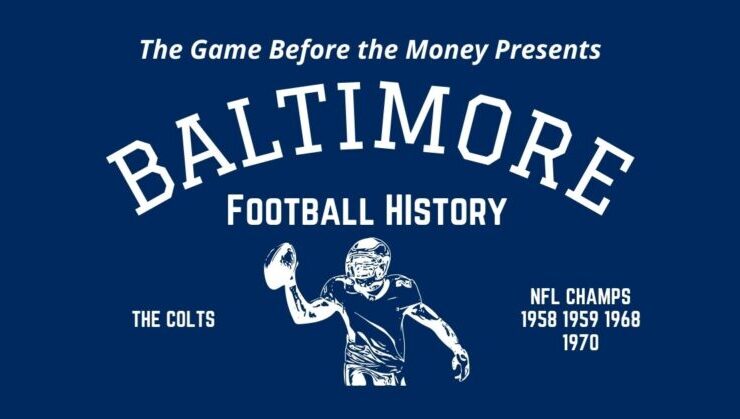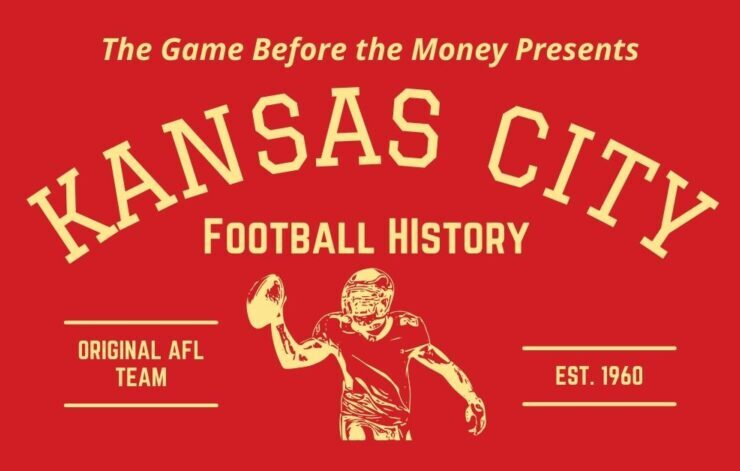The Game Before the Money Podcast looked at the Browns’ game plan for the 1964 NFL Championship Game. Browns assistant coach Dub Jones tells us how Jim Brown was a valuable part of the Browns offense, even on plays that he didn’t touch the ball. Hear more in Episode 17 of the football history podcast.
Cleveland Browns Great Jim Brown
In the 1950s, Dub Jones helped lead the Browns to championships as a dangerous receiving threat. Jones later worked as an assistant coach. He encouraged Jim Brown to increase his route running and receiving skills to help the team win.
You can’t think of the Cleveland Browns of the early to mid-60s without thinking of the great Jim Brown. When you think of Brown, however, you probably think of him running over three defenders and into the end zone. This article digs deeper into Brown’s talent.
Browns 1964 NFL Championship Game Plan
The 1964 Browns made the NFL championship game against the Baltimore Colts, coached by Dub’s former teammate Don Shula. Many people think that Paul Brown was the head coach of the Browns at the time, but Blanton Collier was Cleveland’s head coach in 1964.
The Colts were heavy favorites, but the Browns had a great game plan. Dub Jones filled us in on an important, yet hidden, aspect of Jim Brown’s play that shaped some of the Browns offensive scheme.
“Jim Brown was valuable from a lot of points that nobody knows about,” Jones stated on The Game Before the Money Podcast. “In the championship game, we opened the game with a “70 F Through” (play call) with Jim Brown, and we threw the ball to him.”
Jim Brown made a nice catch and run. The play picked up 23 yards, but there’s a lot more to it than that. The Colts had to adjust their defense. Jones said that the Colts usually had the middle linebacker assist covering receiver Paul Warfield. The threat of Jim Brown receiving the ball forced the middle linebacker to shift focus.
Locking In A Linebacker
“We were having trouble with the middle linebacker flying out to take away the hook or the in pattern for Warfield,” Jones said. “They couldn’t do that with Jim Brown sifting through the line. When we dunked the ball to Jim Brown, from that point on, all he had to do was go through the line. We didn’t have to worry about that middle linebacker getting in our way. Even though the ball is not thrown to Jim Brown, he is still a great weapon.”
The teams fought to a scoreless tie at the end of the first half, but don’t forget that the Colts linebacker who normally helped cover Paul Warfield now stayed home to cover Jim Brown on pass plays. To compensate, the Colts had a safety assist covering Warfield. That adjustment left Browns receiver Gary Collins isolated on a cornerback without the extra safety help the defensive back might normally get.
“The free safety was worried about Warfield on the post pattern or the hook pattern. And then in the meantime, Collins was running the post pattern on the right hand side,” Jones pointed out.
Gary Collins caught three touchdown passes from Browns quarterback Frank Ryan in the second half. Two of them went for over 40 yards. Collins finished with five catches and 130 yards in the Browns 27-0 victory.
“One reason why he did have it is because the safety was tied to Warfield. Even though Jim Brown didn’t catch many balls in the game, he was still a factor in the pass offense,” Jones said.
Football is the Ultimate Team Sport
While it wasn’t the only reason why the Browns won that day, the setup with Jim Brown locking up the middle linebacker on pass plays helped launch Gary Collins on some big plays. Football is the ultimate team sport. That illustrates how a man like Jim Brown helped his team in ways that many fans wouldn’t even notice.
Embed from Getty ImagesLooking for a great NFL history book? Check out The Game Before the Money: Voices of the Men Who Built the NFL available at — Amazon.com – Barnes and Noble – University of Nebraska Press
Like football history? Listen to our podcast! Most episodes include stories from former NFL, AFL and college football stars.




